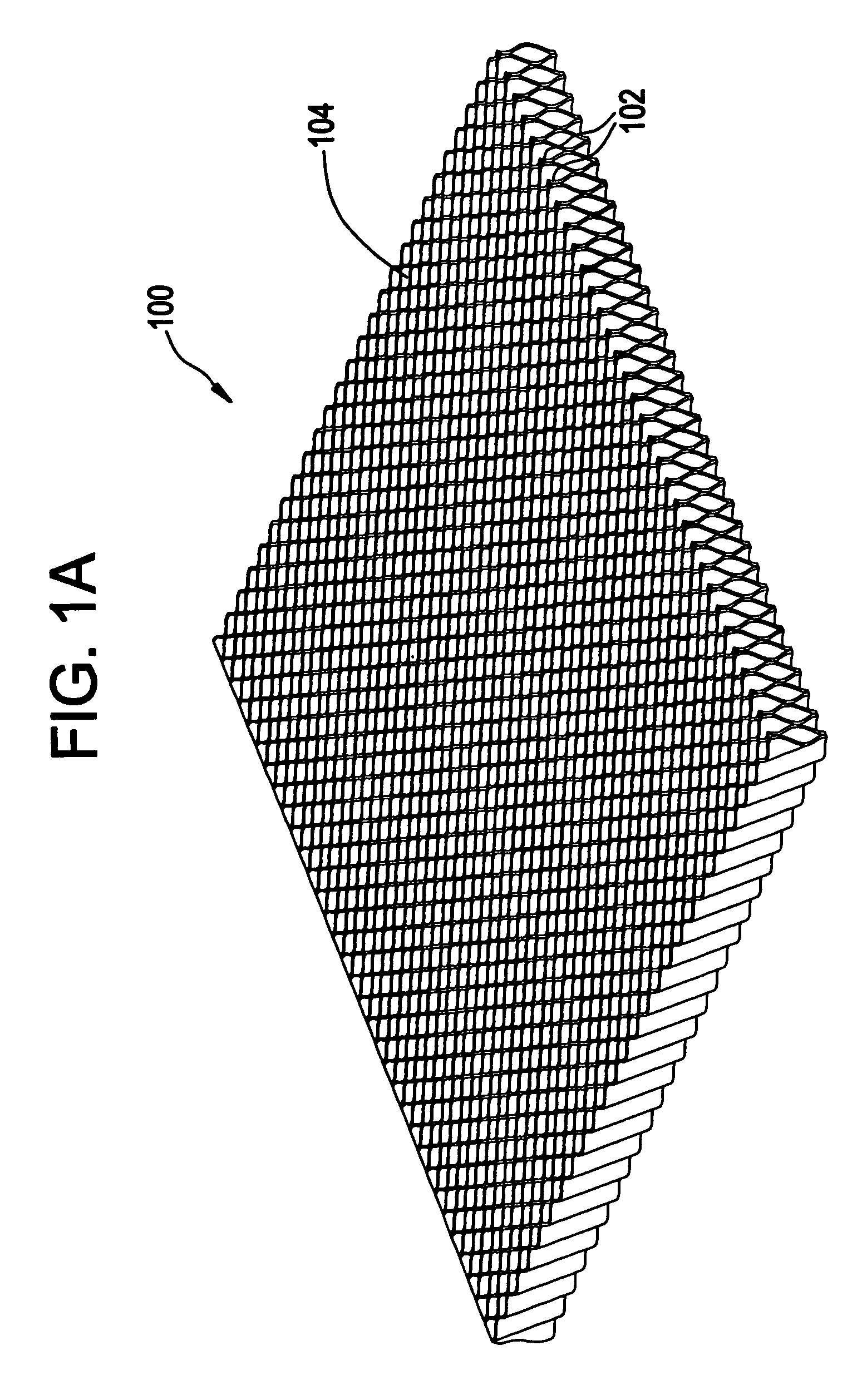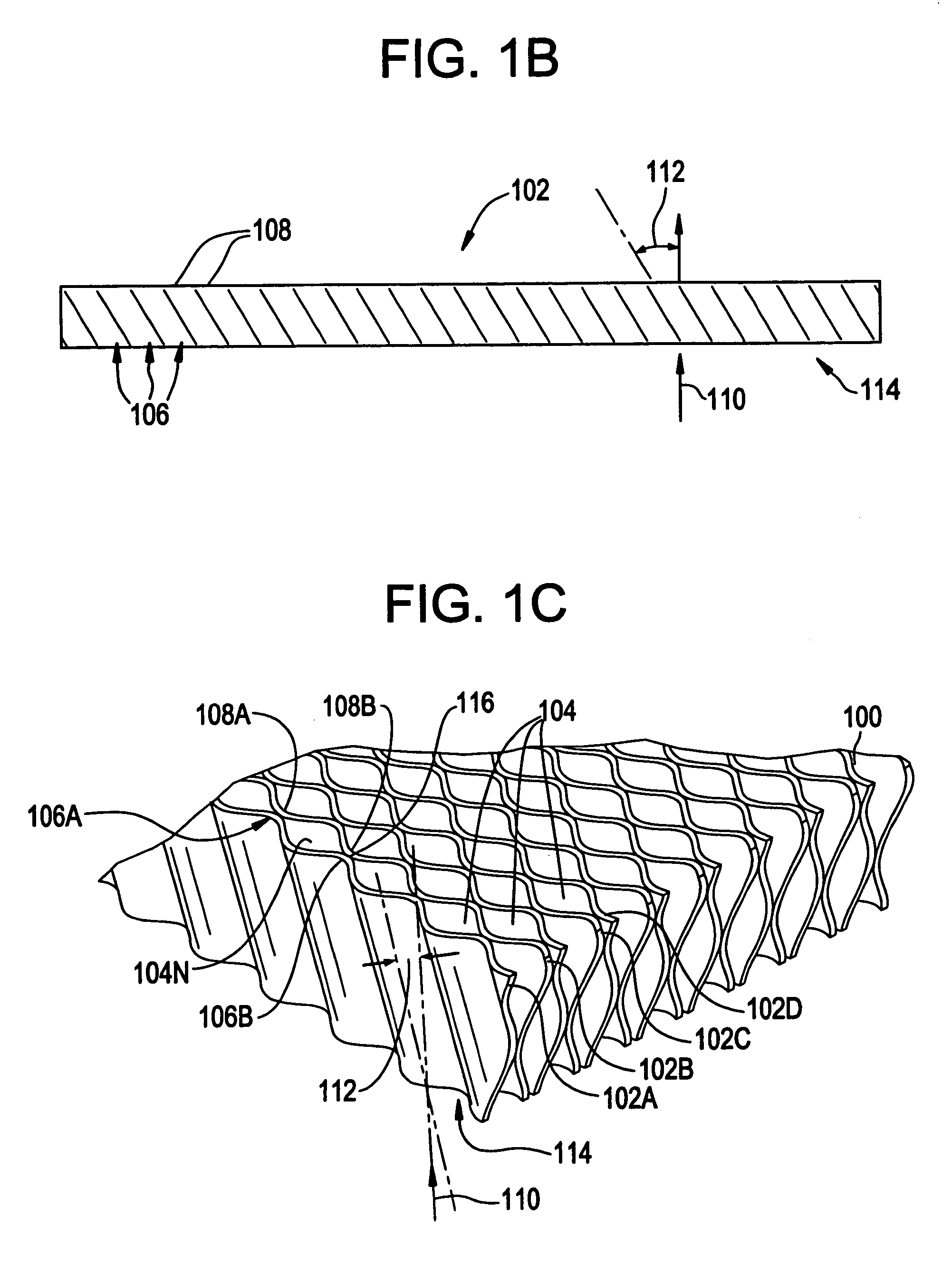Debris filter
a filter and debris technology, applied in the field of nuclear reactor cores, can solve the problems of fuel bundle failure, debris accumulation, complex assembly, etc., and achieve the effects of improving the filtering effectiveness, improving the manufacturability and assembly of debris, and improving the filtering
- Summary
- Abstract
- Description
- Claims
- Application Information
AI Technical Summary
Benefits of technology
Problems solved by technology
Method used
Image
Examples
Embodiment Construction
[0021]The following description is merely exemplary in nature and is in not intended to limit the invention, its applications, or uses.
[0022]In some embodiments of the invention, a debris filter for reactor coolant includes a plurality of adjacent plates defining a plurality of channels therebetween, each of said channels being at an angle to a flow path of the coolant into the filter. One such exemplary embodiment is illustrated in FIGS. 1A, 2B, and 1C.
[0023]Referring to FIG. 1A, a filter 100 includes a plurality of plates 102 defining a plurality of flow channels 104 therebetween. In this illustrated embodiment, the filter 100 is rectangular in shape; however, the filter 100 can be formed in any shape or size adaptable for use within a nuclear reactor. A single plate 102 of the filter 100 is shown in FIG. 1B. Each plate 102 has a plurality of alternating peaks 106 and valleys 108 spaced at a predetermined spacing from one another. The peaks 106 and valleys 108 are configured such ...
PUM
 Login to View More
Login to View More Abstract
Description
Claims
Application Information
 Login to View More
Login to View More - R&D
- Intellectual Property
- Life Sciences
- Materials
- Tech Scout
- Unparalleled Data Quality
- Higher Quality Content
- 60% Fewer Hallucinations
Browse by: Latest US Patents, China's latest patents, Technical Efficacy Thesaurus, Application Domain, Technology Topic, Popular Technical Reports.
© 2025 PatSnap. All rights reserved.Legal|Privacy policy|Modern Slavery Act Transparency Statement|Sitemap|About US| Contact US: help@patsnap.com



